Venkatesh Kandaswamy
Image Matters: Detecting Offensive and Non-Compliant Content / Logo in Product Images
May 06, 2019
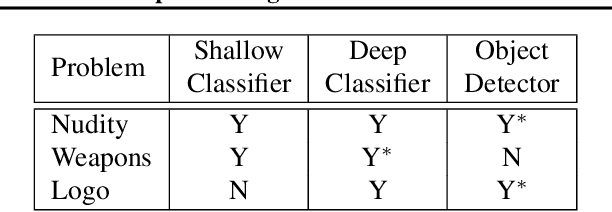

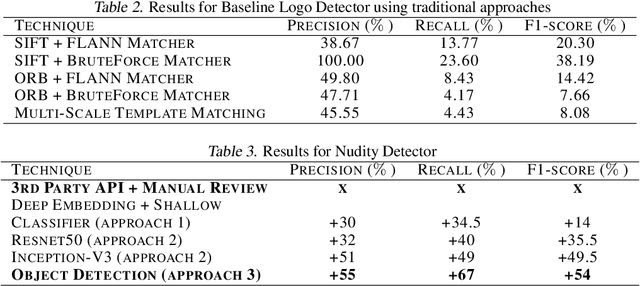
Abstract:In e-commerce, product content, especially product images have a significant influence on a customer's journey from product discovery to evaluation and finally, purchase decision. Since many e-commerce retailers sell items from other third-party marketplace sellers besides their own, the content published by both internal and external content creators needs to be monitored and enriched, wherever possible. Despite guidelines and warnings, product listings that contain offensive and non-compliant images continue to enter catalogs. Offensive and non-compliant content can include a wide range of objects, logos, and banners conveying violent, sexually explicit, racist, or promotional messages. Such images can severely damage the customer experience, lead to legal issues, and erode the company brand. In this paper, we present a machine learning driven offensive and non-compliant image detection system for extremely large e-commerce catalogs. This system proactively detects and removes such content before they are published to the customer-facing website. This paper delves into the unique challenges of applying machine learning to real-world data from retail domain with hundreds of millions of product images. We demonstrate how we resolve the issue of non-compliant content that appears across tens of thousands of product categories. We also describe how we deal with the sheer variety in which each single non-compliant scenario appears. This paper showcases a number of practical yet unique approaches such as representative training data creation that are critical to solve an extremely rarely occurring problem. In summary, our system combines state-of-the-art image classification and object detection techniques, and fine tunes them with internal data to develop a solution customized for a massive, diverse, and constantly evolving product catalog.
A Smart System for Selection of Optimal Product Images in E-Commerce
Nov 12, 2018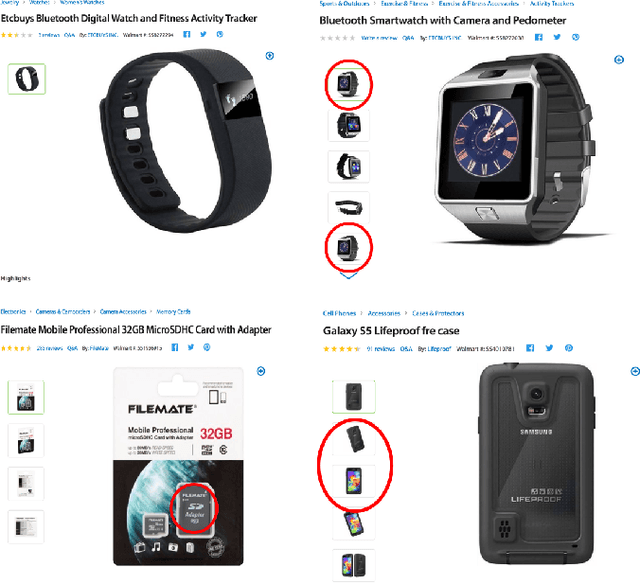
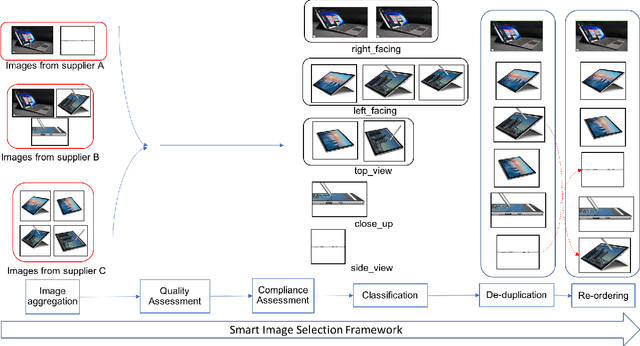
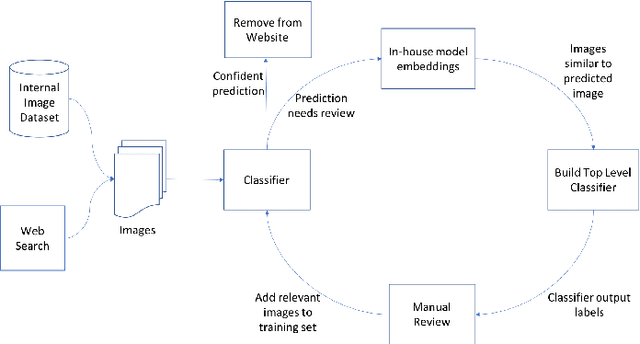
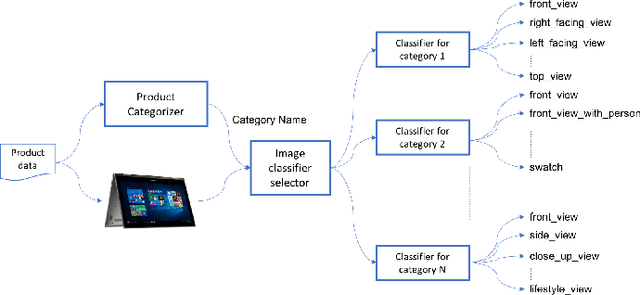
Abstract:In e-commerce, content quality of the product catalog plays a key role in delivering a satisfactory experience to the customers. In particular, visual content such as product images influences customers' engagement and purchase decisions. With the rapid growth of e-commerce and the advent of artificial intelligence, traditional content management systems are giving way to automated scalable systems. In this paper, we present a machine learning driven visual content management system for extremely large e-commerce catalogs. For a given product, the system aggregates images from various suppliers, understands and analyzes them to produce a superior image set with optimal image count and quality, and arranges them in an order tailored to the demands of the customers. The system makes use of an array of technologies, ranging from deep learning to traditional computer vision, at different stages of analysis. In this paper, we outline how the system works and discuss the unique challenges related to applying machine learning techniques to real-world data from e-commerce domain. We emphasize how we tune state-of-the-art image classification techniques to develop solutions custom made for a massive, diverse, and constantly evolving product catalog. We also provide the details of how we measure the system's impact on various customer engagement metrics.
 Add to Chrome
Add to Chrome Add to Firefox
Add to Firefox Add to Edge
Add to Edge